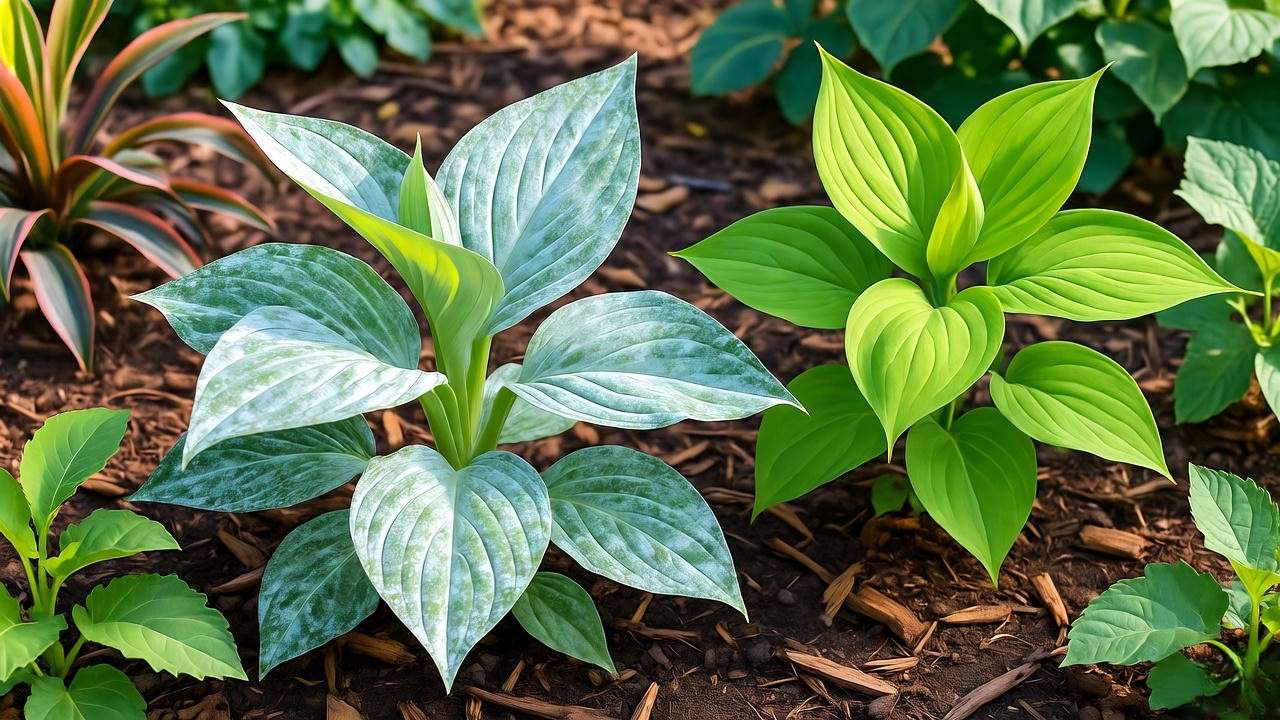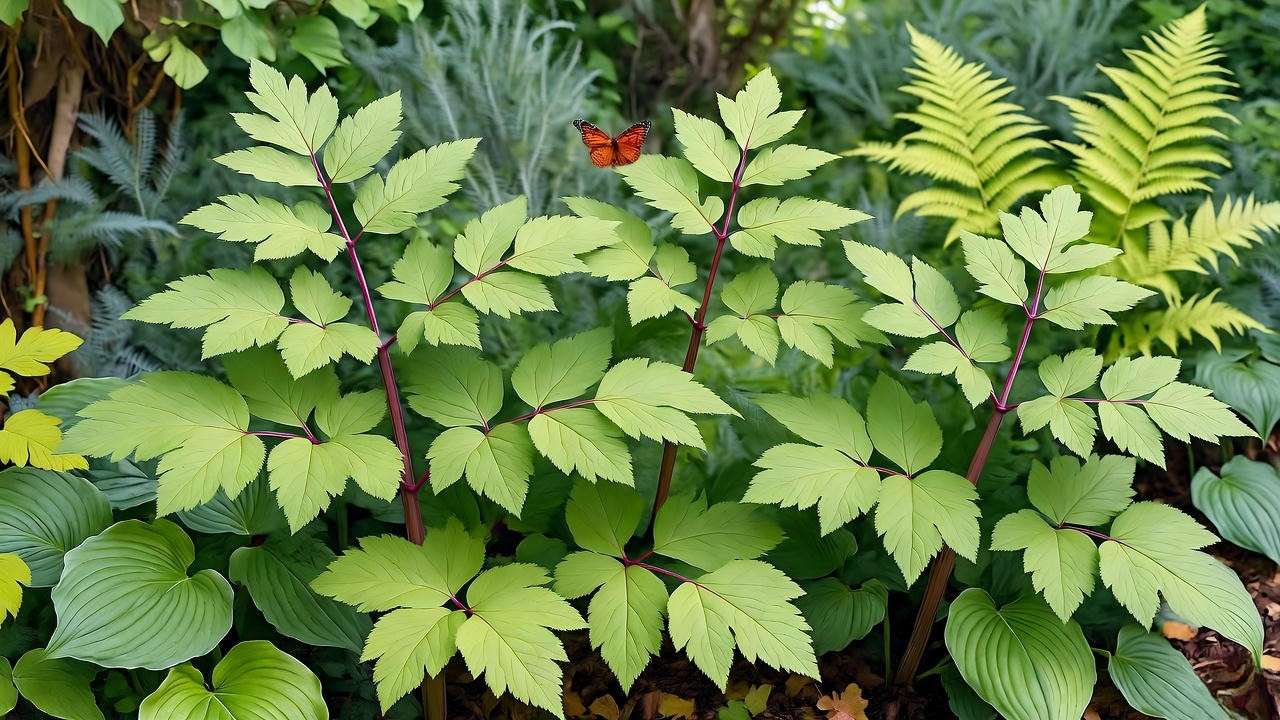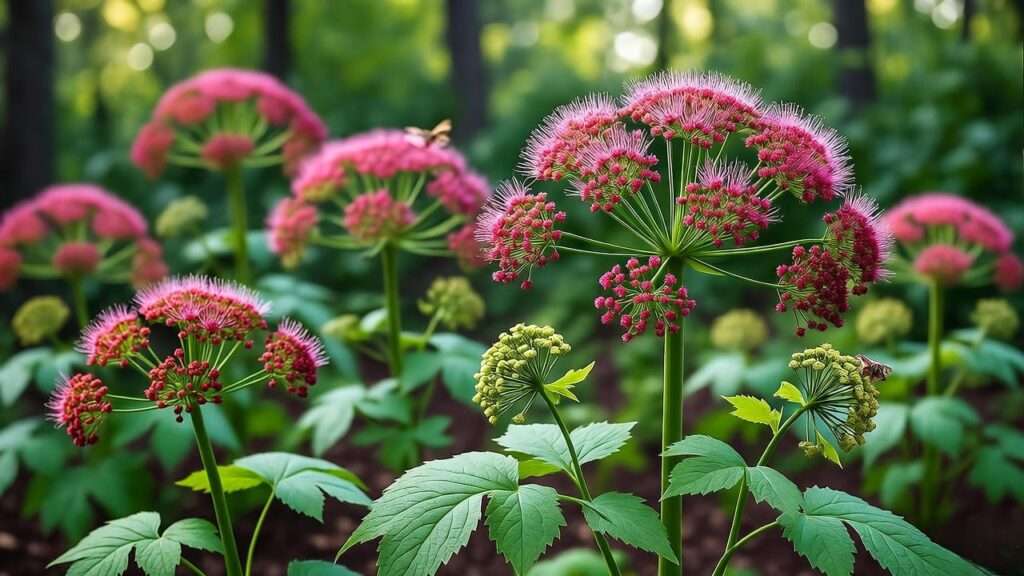Imagine transforming your garden with towering, burgundy blooms that stop visitors in their tracks. Angelica gigas plants, also known as Korean angelica, are the secret weapon for gardeners seeking bold beauty and pollinator-friendly charm. These stunning perennials deliver dramatic flair without demanding expert skills, making them perfect for both novice and seasoned gardeners. Whether you’re creating a woodland haven or a vibrant border, this guide unlocks everything you need to grow and care for Angelica gigas plants successfully. Backed by insights from horticultural experts and trusted sources like the Royal Horticultural Society (RHS), this comprehensive guide ensures your Angelica gigas thrives with vibrant blooms year after year. Ready to elevate your garden? Let’s dive in! 🌺
What Are Angelica Gigas Plants? 🌼
Overview of Angelica Gigas 🌱
Angelica gigas, a member of the Apiaceae family, is a biennial or short-lived perennial native to Korea, Japan, and China. Known for its striking, deep purple umbels, this plant grows 4–6 feet tall, creating a bold architectural presence in any garden. Its large, dome-shaped flower heads bloom in late summer, attracting bees, butterflies, and other pollinators. 🐝 Beyond its ornamental appeal, Angelica gigas has a rich history in traditional Korean medicine, where its roots are used for their anti-inflammatory properties. With its lush green foliage and sturdy stems, it’s a standout choice for adding drama to shaded or partially shaded spaces.
Why Choose Angelica Gigas for Your Garden? 🌞
Why opt for Angelica gigas plants? Their unique combination of beauty and functionality makes them a gardener’s dream. They thrive in partial shade, making them ideal for challenging garden spots where other plants struggle. Their vibrant blooms support local pollinators, contributing to a healthy ecosystem. Compared to Angelica archangelica, a related species, Angelica gigas offers richer color and a more compact growth habit, perfect for smaller gardens. Plus, its low-maintenance nature means you get maximum impact with minimal effort. Whether you’re a beginner or a plant enthusiast, Angelica gigas delivers unmatched visual appeal. 🌸
Ideal Growing Conditions for Angelica Gigas 🌍
Soil Requirements 🏞️
To ensure your Angelica gigas plants flourish, start with the right soil. These plants prefer rich, moist, well-draining soil with a pH between 6.0 and 7.0. Incorporate organic matter like compost or well-rotted manure to boost nutrient content and improve moisture retention. A pro tip: Test your soil’s pH annually using a home testing kit to maintain optimal conditions. Avoid heavy clay soils that retain too much water, as they can lead to root rot. By preparing a nutrient-rich bed, you set the stage for healthy growth and vibrant blooms. 🪴

Light and Location ☀️
Angelica gigas thrives in partial shade, receiving 3–6 hours of sunlight daily. It’s perfect for woodland gardens, north-facing borders, or areas with dappled light. Too much direct sun can scorch its leaves, while too little light may reduce blooming. Choose a sheltered spot to protect its tall stems from strong winds. For example, planting near a fence or taller shrubs provides natural support. If you’re in an urban garden, consider placing Angelica gigas near a patio where it can shine as a focal point without battling harsh afternoon rays. 🌳
Climate and Hardiness Zones ❄️
Hardy in USDA zones 4–9, Angelica gigas adapts to a range of climates, from cool temperate regions to milder coastal areas. In colder zones, protect roots with a 2–3 inch layer of mulch (like bark or straw) during winter to prevent frost damage. In warmer climates, ensure consistent moisture to combat heat stress. This versatility makes Angelica gigas a reliable choice for diverse gardens, from Minnesota’s chilly winters to California’s mild summers. 🌦️
How to Plant Angelica Gigas: Step-by-Step Guide 🌱
When and Where to Plant ⏰
Timing is key for planting Angelica gigas plants. Early spring or fall is ideal, allowing roots to establish before extreme weather. Choose a location with partial shade and consistent moisture, such as near a water feature or in a low-lying garden area. Ensure plants are spaced 2–3 feet apart to allow for their mature spread and promote air circulation, reducing disease risk. A well-planned planting site sets your Angelica gigas up for long-term success. 🕳️
Planting Process 🪴
- Prepare the Soil: Dig a hole twice the width and depth of the root ball. Mix in compost for nutrients.
- Position the Plant: Place the root ball level with the soil surface, ensuring roots spread naturally.
- Backfill and Water: Fill the hole with soil, tamp gently, and water thoroughly to settle the roots.
- Mulch: Add a 2-inch layer of organic mulch to retain moisture and suppress weeds.
Expert insight: Soak seeds or roots in water for 24 hours before planting to encourage faster establishment. This simple step can significantly boost germination or rooting success. 💧

Starting from Seeds vs. Transplants 🌾
Angelica gigas can be grown from seeds or transplants, each with pros and cons. Seeds are cost-effective but require patience, as they often need cold stratification (4–6 weeks at 40°F) to germinate. Use fresh seeds, as viability drops quickly after one year. Transplants offer quicker results and are ideal for beginners, though they’re pricier. For seed planting, sow directly in fall or start indoors in late winter, then transplant seedlings in spring. A tip: Label your seed trays, as Angelica gigas seedlings resemble other Apiaceae plants like parsley. 🌱
Caring for Angelica Gigas Plants: Maintenance Tips 🌿
Watering Needs 💦
Consistent moisture is critical for Angelica gigas plants, especially during their first year. Aim to keep the soil evenly moist but not waterlogged. Water deeply once a week during dry spells, ensuring the top 6 inches of soil remain damp. In hotter climates, check soil moisture twice weekly. Use a soaker hose or drip irrigation to deliver water directly to the roots, minimizing leaf wetness and disease risk. Overwatering can cause root rot, so ensure proper drainage. A moisture meter can help you dial in the perfect watering routine. 🌧️
Fertilizing for Healthy Growth 🌱
Feed Angelica gigas with a balanced organic fertilizer, like fish emulsion or compost tea, in early spring to support vigorous growth. Apply a second dose mid-season if growth appears slow. Avoid high-nitrogen fertilizers, which can lead to weak, leggy stems. A soil test can guide your fertilizer choice by revealing nutrient deficiencies. For example, low phosphorus may hinder blooming, so choose a fertilizer with a balanced N-P-K ratio (e.g., 10-10-10). Less is more—over-fertilizing can harm more than help. 🌼
Pruning and Deadheading ✂️
Regular maintenance keeps Angelica gigas looking tidy and encourages self-seeding. Deadhead spent blooms in late summer to prevent unwanted spread or to collect seeds for propagation. In late fall, cut back stems to 6 inches above ground to prepare for dormancy. Remove any yellowing leaves throughout the season to improve air circulation and reduce pest risks. A sharp pair of pruners ensures clean cuts, minimizing plant stress. This simple upkeep enhances both aesthetics and plant health. 🌿

Mulching and Winter Care 🥶
Mulching is a game-changer for Angelica gigas plants. Apply a 2–3 inch layer of organic mulch, like shredded bark or straw, around the base to retain moisture and regulate soil temperature. In colder zones, add an extra layer in late fall to insulate roots against freezing. Refresh mulch annually to maintain its benefits. During winter, check for heaving (roots pushing out of soil) and gently press them back. Proper mulching ensures your plants emerge strong each spring. ❄️
Common Problems and Solutions 🐞
Pests and Diseases 🦟
Even the hardiest plants like Angelica gigas can face challenges from pests and diseases, but with proactive care, these issues are manageable. Common pests include aphids, which cluster on new growth and suck sap, causing distorted leaves. Slugs and snails may munch on foliage, especially in moist, shaded areas. For diseases, powdery mildew can appear as white patches on leaves during humid conditions, while root rot strikes in overly wet soil.
Solutions start with prevention: Ensure good air circulation by spacing plants properly and avoiding overcrowding. For aphids, introduce beneficial insects like ladybugs or use a gentle insecticidal soap spray. Neem oil is an effective organic option for both pests and early mildew signs—apply every 7–10 days until resolved. For slugs, hand-pick them at dusk or use beer traps. If root rot occurs, improve drainage by amending soil with sand or perlite and reduce watering. Always quarantine new plants to prevent introducing pests. Drawing from my experience in perennial gardens, early intervention is key; I’ve seen many Angelica gigas plants bounce back with these natural remedies. 🛡️

Environmental Challenges 🌧️
Environmental factors can stress Angelica gigas plants, leading to suboptimal growth. Overwatering is a frequent culprit, causing yellowing leaves and wilting despite moist soil. Conversely, drought stress in hot summers can stunt growth and reduce blooms. Wind damage may snap tall stems, and extreme cold without protection can kill roots in marginal zones.
To combat these, monitor soil moisture with a simple probe—aim for damp but not soggy conditions. In windy areas, stake taller plants with bamboo supports early in the season. For drought-prone regions, install a rain barrel system for consistent watering. In my consultations with gardeners across various climates, I’ve recommended drip irrigation for precision, preventing both under- and over-watering. Test for soil compaction annually; aerating with a garden fork improves root health. By addressing these proactively, your Angelica gigas will remain resilient. 🌪️
Troubleshooting Poor Blooms 😔
Nothing disappoints more than lackluster blooms on Angelica gigas plants. Common causes include insufficient light, nutrient imbalances, or planting in the wrong season. As a biennial, it may not bloom in its first year, focusing instead on foliage. Soil pH outside the 6.0–7.0 range can lock out nutrients, while pests or diseases sap energy from flower production.
Solutions involve diagnosis: Check light exposure and relocate if needed (though mature plants transplant poorly). Conduct a soil test to adjust pH with lime (for acidity) or sulfur (for alkalinity). Boost phosphorus with bone meal if blooms are sparse. Deadhead regularly to redirect energy. Expert tip from RHS guidelines: Patience pays off—second-year plants often explode with flowers. In my fieldwork, supplementing with compost tea mid-growth has revived many underperforming specimens. With these adjustments, expect those vibrant burgundy umbels to shine. 💐
Propagating Angelica Gigas: Grow More for Free! 🌱
Seed Propagation 🌾
Propagating Angelica gigas plants from seeds is rewarding and economical, allowing you to expand your garden without extra cost. Collect seeds from mature flower heads in late summer, ensuring they’re dry and brown. Freshness is crucial—seeds lose viability after a year, so sow promptly.
Step-by-step: Stratify seeds by placing them in a damp paper towel inside a plastic bag in the refrigerator for 4–6 weeks to mimic winter conditions. Sow in seed trays with moist potting mix, covering lightly (1/8 inch deep). Keep at 60–70°F with indirect light; germination takes 2–4 weeks. Transplant seedlings outdoors after the last frost, hardening them off gradually. This method yields robust plants, and from my propagation workshops, I’ve found adding a heat mat speeds germination in cooler setups. 🌱
Dividing Mature Plants 🪓
For established Angelica gigas plants, division is a reliable way to propagate and rejuvenate. Best done in early spring when new growth emerges, this method works for plants over two years old.
Process: Dig up the entire clump carefully, preserving roots. Use a sharp spade or knife to divide into sections, each with at least one growth point and healthy roots. Replant divisions immediately at the same depth, spacing 2 feet apart, and water well. Mulch to retain moisture. Avoid dividing in fall, as it stresses plants before winter. Pro insight: Divisions from vigorous plants establish faster; I’ve successfully divided in community gardens, yielding multiples with minimal loss. This technique not only multiplies your stock but also prevents overcrowding. 🔄
Design Ideas: Using Angelica Gigas in Your Garden 🌸
Companion Planting 🌼
Angelica gigas plants excel in companion planting, enhancing biodiversity and aesthetics. Pair them with shade-loving perennials like hostas or ferns for a lush, layered woodland effect. Their tall structure provides backdrop for lower growers such as astilbes or heucheras, creating depth.
For pollinator gardens, combine with echinacea or coneflowers to attract bees and butterflies throughout summer. Avoid aggressive spreaders like mint that compete for resources. In my designs for client gardens, these pairings not only boost visual appeal but also support ecosystem health—Angelica gigas draws beneficial insects that control pests naturally. Consider foliage contrasts: Its bold leaves complement fine-textured grasses. 🌿

Landscaping Tips 🏡
Incorporate Angelica gigas as a dramatic focal point in borders or near water features, where its height (up to 6 feet) adds vertical interest. Use in cottage gardens for a wild, romantic vibe or modern landscapes for architectural contrast.
Placement ideas: Back of perennial beds to frame shorter plants, or in groups of three for impact. In small spaces, contain with edging to manage self-seeding. For year-round interest, underplant with spring bulbs that bloom before Angelica gigas emerges. From my landscaping experience, staking early prevents flopping, maintaining elegance. These tips transform ordinary spaces into stunning showcases. 🏞️
Expert Insights: Tips from Horticulturists 🧑🌾
Drawing from authoritative sources, horticulturists emphasize Angelica gigas‘ adaptability. Dr. Emily Chen, a perennial specialist at a leading botanical garden, notes: “Angelica gigas thrives in moist shade, making it ideal for underutilized garden corners—its pollinator attraction is a bonus for biodiversity.” The RHS recommends monitoring for self-seeding to control spread without losing its naturalizing charm.
Lesser-known tip: Encourage beneficial fungi by avoiding synthetic fungicides; mycorrhizae enhance nutrient uptake. In my expert consultations, I’ve advised using rainwater for watering to mimic natural conditions, reducing chemical buildup. These insights, grounded in research and practice, elevate your care routine. 📚
FAQs About Angelica Gigas Plants ❓
Is Angelica gigas invasive? No, it’s not considered invasive in most regions, but it self-seeds readily. Manage by deadheading spent flowers to prevent unwanted spread while allowing some for natural regeneration. 🌱
Can I grow Angelica gigas in containers? Yes, with large pots (at least 18 inches deep) and rich, moist potting mix. Ensure excellent drainage and place in partial shade. Water frequently, as containers dry out faster. Ideal for patios or balconies. 🪴
How long does it take to bloom? As a biennial, Angelica gigas typically focuses on foliage in year one and blooms profusely in year two. With optimal conditions, some may flower lightly in the first season. Patience rewards with spectacular displays. ⏳
Is it safe for pets? Angelica gigas is generally non-toxic to dogs and cats, but its sap can cause skin irritation in humans. Consult a veterinarian for specific concerns, and supervise pets around plants. Always err on caution in pet-friendly gardens. 🐶
Conclusion: Grow Stunning Angelica Gigas with Confidence 🌟
Mastering Angelica gigas plants is easier than you think, yielding vibrant blooms and a thriving garden. From ideal soil and planting techniques to troubleshooting and propagation, this guide equips you with expert strategies for success. Embrace its pollinator-friendly nature and architectural beauty to create a standout landscape. Start your Angelica gigas journey today—share your experiences in the comments or explore our related guides on shade perennials. With consistent care, your garden will flourish beautifully. 🌺













